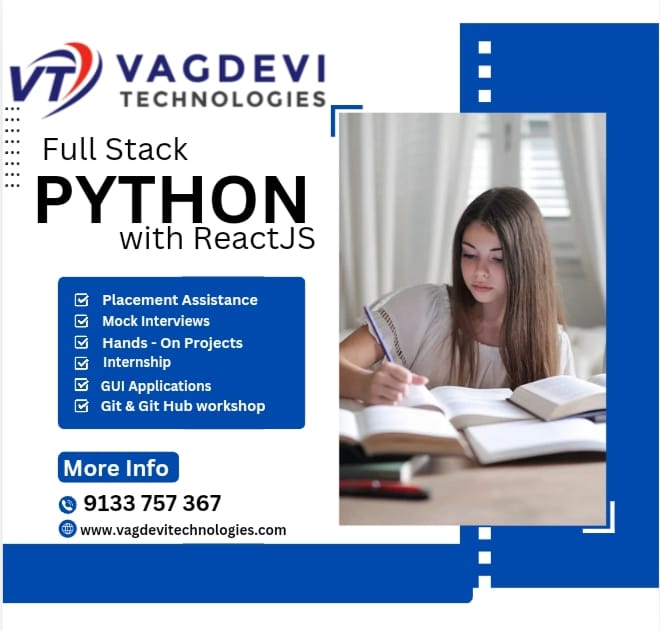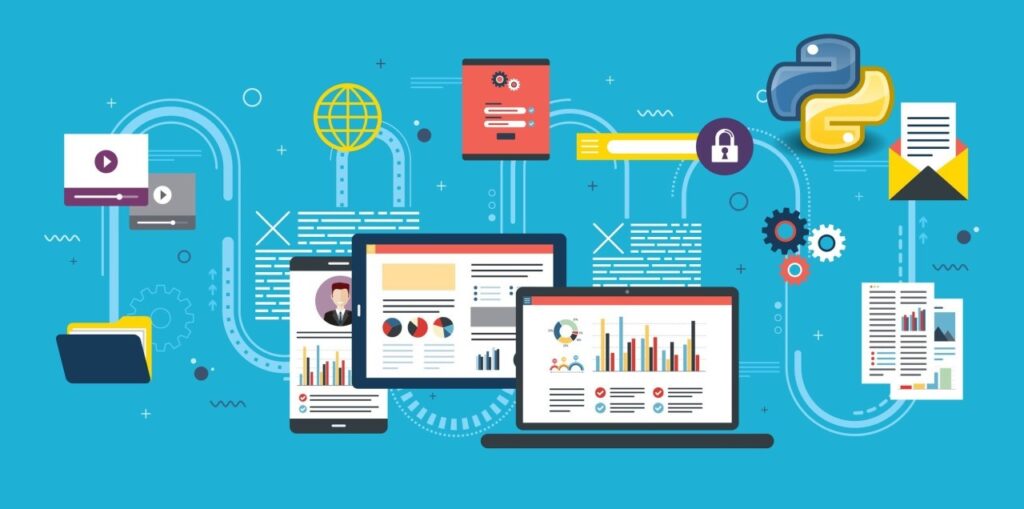What Will You Learn in the Python Full Stack Developer Program?
The Python Full Stack course is divided into two primary components: Frontend Development and Backend Development. Here’s a breakdown of the course modules:
Introduction to Full Stack Development
Before diving into the technical aspects, you’ll get an overview of what full-stack development entails. This includes:
The roles and responsibilities of a Full Stack Developer.
The tools, technologies, and frameworks used in both frontend and backend development.
Understanding the relationship between frontend and backend technologies.
Frontend Development – Building the User Interface
The frontend is the user-facing part of the application. In this section, you’ll learn how to design and implement the user interface (UI) using the following technologies:
HTML5 & CSS3
Understanding the structure of web pages with HTML.
Styling websites using CSS.
Responsive web design and media queries.
HTML5 features like semantic tags, multimedia integration, etc.
JavaScript
Introduction to JavaScript and its importance in web development.
Working with variables, functions, loops, and conditions.
DOM manipulation for interactive web pages.
Event handling, forms, and validation.
Frontend Frameworks – React.js
Overview of React.js and its benefits for building modern UIs.
Components, props, and state management.
Hooks, Context API, and Router for navigation.
Integration with backend APIs.
Backend Development – Python with Django/Flask
The backend is where the application logic resides. Python, being a versatile and powerful programming language, is widely used for backend development. In this section, you’ll explore two popular Python frameworks:
Python Basics for Backend
Introduction to Python programming: Variables, Data Structures, Functions, and Object-Oriented Programming.
Working with Python libraries and packages.
Django Framework
Setting up and configuring Django.
Understanding the MVC (Model-View-Controller) architecture.
Creating models, views, and templates.
Implementing authentication, authorization, and user management.
Working with databases: SQLite/PostgreSQL.
Building RESTful APIs with Django Rest Framework (DRF).
Flask Framework (Optional)
Introduction to Flask and why it’s lightweight.
Creating simple web applications using Flask.
Working with Flask extensions for database, forms, and authentication.
Database Management
A Full Stack Developer needs to be proficient in working with databases to store, retrieve, and manipulate data. In this section, you’ll learn:
SQL and Relational Databases
Basics of SQL: SELECT, INSERT, UPDATE, DELETE, and JOIN operations.
Working with databases like MySQL, PostgreSQL, or SQLite.
Designing and implementing normalized database schemas.
NoSQL Databases
Introduction to NoSQL databases (e.g., MongoDB).
When to use NoSQL vs. SQL databases.
Basic operations in MongoDB using Python.



